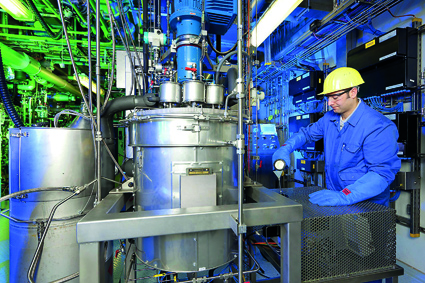A Few Facts About Food Grade Warehousing
A Few Facts About Food Grade Warehousing
 Whether it involves the storage of fresh fruits and vegetables, food ingredients and additives, refrigerated or frozen meats and seafood, or finished packaged food ready for sale, food-grade warehousing plays a vital role in getting food from the producers to the consumers. Food-grade warehousing also plays a key role in the health and safety of our food supply. The best food warehouses maintain an AIB Superior food-grade rating.
Whether it involves the storage of fresh fruits and vegetables, food ingredients and additives, refrigerated or frozen meats and seafood, or finished packaged food ready for sale, food-grade warehousing plays a vital role in getting food from the producers to the consumers. Food-grade warehousing also plays a key role in the health and safety of our food supply. The best food warehouses maintain an AIB Superior food-grade rating.
Here are 17 facts you should know about food grade warehousing:
A food warehouse can be a food storage facility of any size, storing any amount of food for either long or short periods of time, for distribution in normal food channels. Food warehouses serve as a critical link in the food chain from the farmer to processor to distributor to retailer and ultimately to the consumer.
Like all businesses, the goal of the food warehouse is to generate profits for its owners and provide job opportunities for workers. It serves its customers by providing access to food in and out of season whether locally sourced or from other regional, national or international sources.
The most common types of food warehouses include: dry storage warehouses, cold or frozen storage warehouses, chilled or refrigerated storage warehouses.
Safe food warehousing is vital. It prevents economic losses for all members of the food channel, facilitates economic growth and trade, promotes health and well-being within the community at large and prevents the spread of food-borne illness and diseases.
Certification programs like that provided by AIB International play a crucial role in food safety auditing and education.
When touring a food warehouse during an on-site visit, you should pay attention to the grounds surrounding the building to make sure they are free of weeds, trash, standing water, rodent tracks and/or burrows.
The exterior of the warehouse building should be well-maintained and in good repair. There should be no obvious cracks or holes in walls. Openings for pipes or conduit entering the structure should be properly sealed to prevent entry of pests. Roofs should not leak.
Inside the warehouse building, floors, walls and ceilings should be smooth, clean and maintained in good repair. Windows and doors should close tightly to prevent entry of pests.
Frequent thorough cleaning plays a significant role in preventing cross contamination and maintaining sanitary conditions within the warehouse.
Typical equipment used in a food grade warehousing include forklifts, shelving, storage bins, pallets, refrigeration units (chillers), freezer units (freezers), temperature and humidity gauges. Equipment should be rust resistant, odor resistant and non-porous, so that it can be easily cleaned and sanitized.
Food items should be stored at the proper temperature and humidity in areas of the warehouse that are free from physical, chemical or microbiological hazards.
Food items should be stored and rotated on a first-in, first-out basis.
Thermometers should be present in all frozen storage, refrigerated storage and dry storage areas. On-site temperature logs should be maintained for these storage areas.
In general, all frozen food products should be stored at a temperature of 0 degrees F or lower.
Temperatures in chilled or refrigerated storage should be kept between 34 degrees F and 39 degrees F.
Temperatures in dry storage areas should be kept between 50 degrees F and 70 degrees F.
Hazardous chemicals needed for the operation of the warehouse, such as pesticides, cleaning agents, solvents, lubricants, etc. should be safely and securely stored with access limited to authorized, trained employees. These materials should be properly labeled and used in accordance with the manufacturers’ instructions regarding handling procedures, required protective ware, quantities for safe usage, etc.

